General Requirements for a Solar Panel System Installation
Green energy, the clean and renewable solar energy is the best alternative for residual and industrial consumers around the world. It minimizes the overall running cost and carbon environmental pollution. The opt-out transform percentage from regular power sources to the green energy, especially solar power is rapidly growing in the US, EU, China, Middle East and Asia.
Solar Panel System
Solar panel (also known as photovoltaic cell or solar cell) is a device which absorbs photos from the sun light and converts to the electrical energy.
In recent years, the concept of of-grid and smart grid system is more populated and consumer opting out for clean energy like wind and solar power system to eliminate or at lease reduce the dependency on regular power from electricity provider and reduce the overall running cost as well. An efficient solar power system with warranty for many years will lead to recover the initial cost and free energy.
Main Components of a Solar Panel System
Below are the basic and general components and devices which needed for a solar panel system installation at home. Details of each device is given below each section.
(1) Solar Panel
Solar panel also known as Solar Cell or Photo Voltaic Cell is the backbone of solar power system. There are some types of solar panels such as polycrystalline and monocrystalline. Monocrystalline is more efficient and little bit expensive as compared to polycrystalline solar panels. The selection criteria for a solar panel are different i.e. space, warranty, efficiency, technology type, cost etc. Keep in mind that output is the king when selecting a proper solar panel for residential solar power installation.
In general, the solar panel is directly connected to the charge controller but there are different connection of solar panel arrays such as series and parallel connection which depends on load calculation and specific energy requirement for home appliances, battery bank connection, roof surface space, climate and peak sunshine hours.
You can easily find the number of required solar panels and charging current for battery and follow the step by step guide for solar panel installation with inverter rating, backup power of batteries according to the load requirement.
In fig below, a 120 watts, 12V and 10A solar panel is shown which produce 12V DC supply for direct battery charging and DC load can be directly connected through it via charge controller.

(2) Charge Controller
As the name suggests, a charge controller (also known as charge regulator) is a device which is used to regulate the voltage and current from the solar panels connected to the batteries. The main purpose of a charge controller is to prevent the overcharging of batteries (which may lead to damage the battery as well) through solar panels as 12V solar panels provided 17-20V in case of no load or full sunshine. The reason behind this scene is that manufacture desin a solar panel for different climate and environment so that, you get the max rated voltage in case of cloud cover, low sunshine and heavy haze etc.
There are multiple types of charge controllers are available in the market such as follow:
- Simple – 1 and 2 Stage Charge Controllers: Relay and shunt resistor are used to control the voltage in single or two stages to disconnect the solar panel from the battery in case of over voltage.
- PWM (Pulse Width Modulation) – 3 Stage Charge Controllers: It based on pulse with modulation and cutoff the battery circuit from the connected solar panel from the photo-voltaic cell in case of overcharging.
- MPPT (Maximum Power Point Tracking) Controllers: MPPT is a DC to DC converter in case of solar panels array to the battery bank. It optimize and regulate the higher DC voltage levels from the solar panel and convert to the lower optimized and regulated voltage to charge the battery. These are little bit expensive but more efficient. They provide 10-30% more power to battery with efficiency of 94-98%.
In fig below, a 5-100 Ampere MPPT Charge Controller is shown which can be used for 12-48V battery bank and the max rating for solar panels system is 170A, 150V.

(3) Battery
Batteries are used for backup charge storage. there are different types of batteries used in solar power system for storage and backup operation at overnight when the direct power from solar panels are not available. Series, parallel or series-parallel connection of batteries bank is depends on the system design i.e. 12V, 24V or 48V system configuration. In case of clouds and no sunshine, the battery bank can be charged through AC supply from power grid via inverter for later use.
The following fig shows a 150Ah, 12V. The battery is directly connected to the charge controller which control the incoming charging currents and voltage from the photovoltaic cell connected to the charge controller for backup storage and operation.
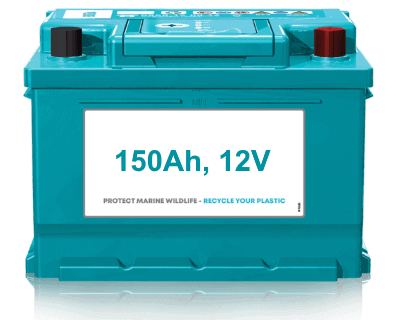
(4) Inverter / UPS
Inverter is a device which convert the DC power supply to the AC power supply. Inverter and converter which known as UPS (Uninterruptible Power Supply) is used to convert the DC voltage to AC for AC operated home appliances. UPS is also used to convert the AC to DC to charge the battery from direct AC power supply.
There are many types of inverters available in the market according to your needs such as follow:
- Centralized or String Inverter with less cost but inefficient.
- Power Optimizer used to convert DC to AC and connected to central inverter.
- Micro Inverter with smooth and reliable operation even with low sunshine but costly.
The following fig shows a 1000 Watts, 12 V DC to 110VAC and 230V AC inverter. It is connected between battery and load to convert battery output (12V DC to 230V AC) to our home appliances which operate on 230V AC. The second slot is for 110-120V AC operated equipment.

Which one is the Best Solar Panel for Home and How Much Does it Cost?
monocrystalline solar panels are better option than polycrystalline but they are little bit expensive. The final decision depends on many factors such as your region and environment, sunshine hours, load requirements and types of batteries used in the system etc. We have already discussed the topic in details as it depends on many factors such as load, space, environment, technology, backup hours etc and all these factors should be considers while selecting a proper solar panel installation system according to the requirements. The post can be seen here.
Related Posts:
- Solar Panel Wiring and Installation Diagrams
- How to Connect Automatic UPS / Inverter to the Home Supply System?
- Electrical Home Wiring Diagrams & Tutorials
- UPS / Inverter Wiring Diagrams & Connection
- Solar Panel Wiring & Installation Diagrams
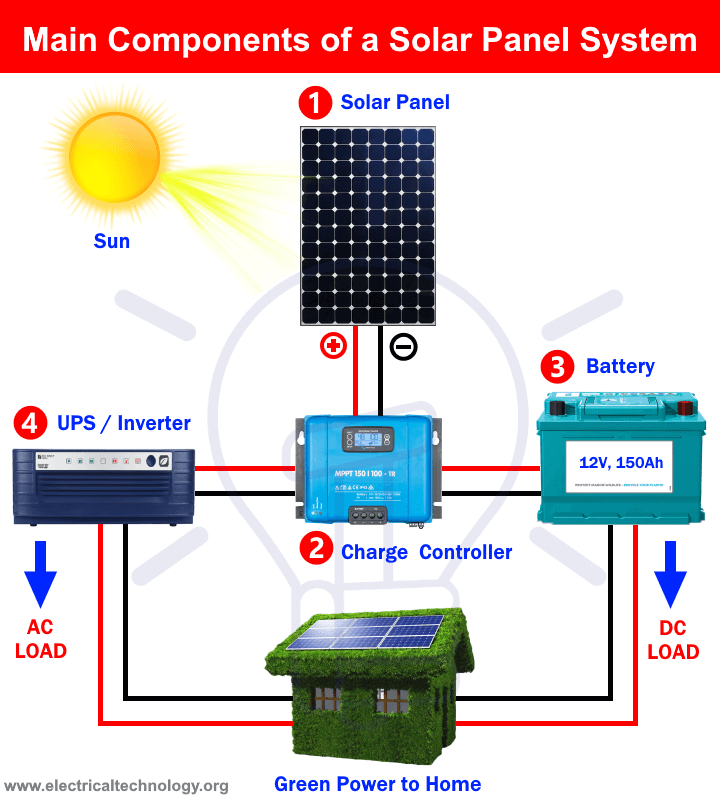
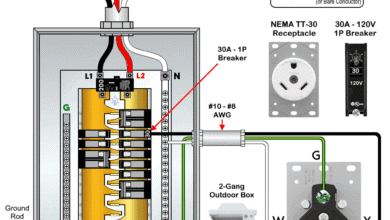 How to Wire NEMA TT-30 Receptacle for RVs & Travel Trailers
How to Wire NEMA TT-30 Receptacle for RVs & Travel Trailers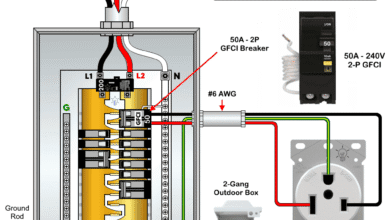 How to Wire a 50A – 250V, NEMA 6-50 Receptacle
How to Wire a 50A – 250V, NEMA 6-50 Receptacle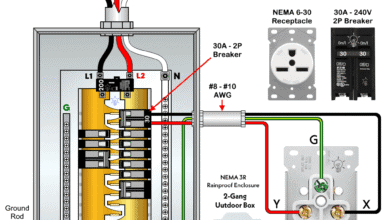 How to Wire a 30A – 250V, NEMA 6-30 Receptacle
How to Wire a 30A – 250V, NEMA 6-30 Receptacle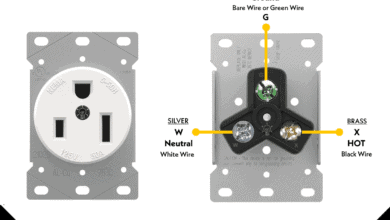 How to Wire a 50A – 125V – NEMA 5-50 Receptacle
How to Wire a 50A – 125V – NEMA 5-50 Receptacle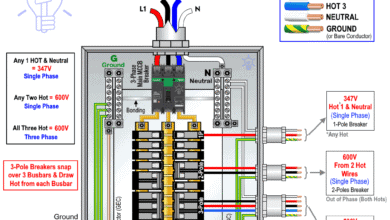 How to Wire 600/347V, 1-Phase & 3-Phase Main Service Panel
How to Wire 600/347V, 1-Phase & 3-Phase Main Service Panel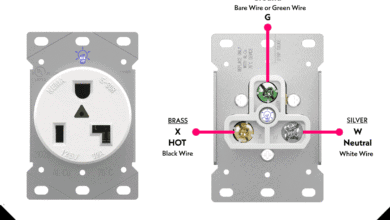 How to Wire a 30A – 125V – NEMA 5-30 Receptacle
How to Wire a 30A – 125V – NEMA 5-30 Receptacle